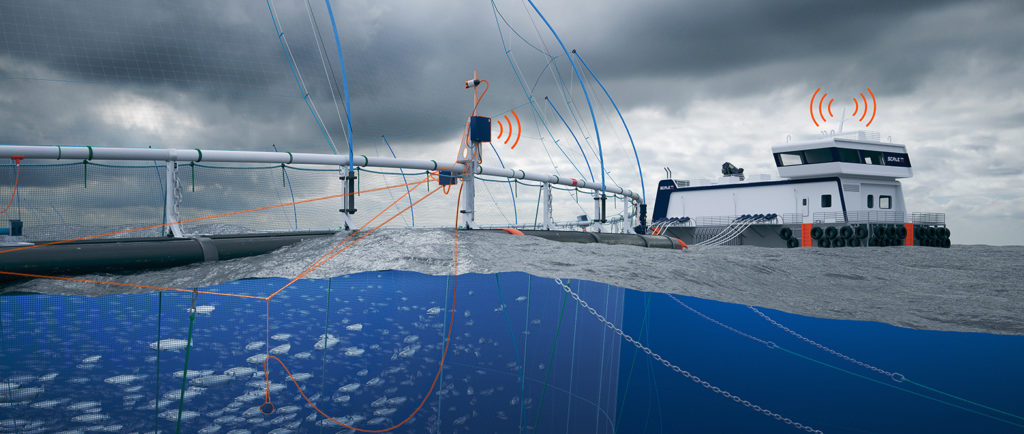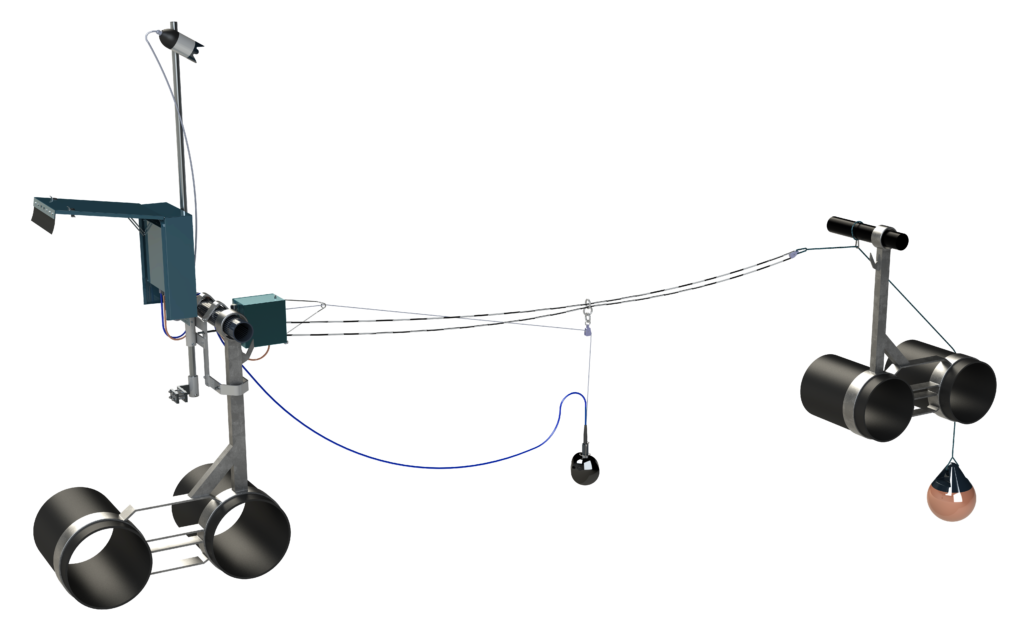Although personnel in the aquaculture industry mostly work above the water’s surface, it is actually beneath it that the real value is created.
The fact that for so many years we have lacked a more detailed overview of what happens beneath the surface in the pen has been a source of frustration for many aquaculture professionals.
Fortunately, technology has evolved and many people have now realised that they can make use of the latest in camera technology and transmission technology – even at sites exposed to the elements – to ensure better control both above and below the water’s surface.
Wireless transmission of HD images
“Given that you have a camera on your own mobile phone that can send images all over the world in just a few seconds, it’s hardly strange that we also want faster, better images of our fish,” says Thomas Wiig, Innovation Manager at ScaleAQ.
Ever since ScaleAQ began supplying cameras to the aquaculture industry in the 90s, there has been rapid development in the sector. And just as is the case with most innovation in the industry, cameras have also developed on the basis of experience from the pen itself.
“For many years, we received requests from aquaculture operators asking us to develop a way to transmit digital HD images from the pen to the barge or a base on land in a way that was stable and wireless. That’s why we’re proud that we now supply wireless HD systems that have been stress tested over a long period of time with several different aquaculture professionals,” Thomas says.
Extended feeding window
With 27 offices across 11 countries, ScaleAQ has developed systems that work for all locations. Their robust antenna and network systems have been created to suit the harsh environment in which they are deployed. The advantage of having a local presence in so many places is that maintenance and servicing of camera solutions is never far away. According to Thomas, the sharing of experiences from across the world has also served the industry in good stead.
“We know that aquaculture in Norway faces different challenges. The weather and daylight hours can vary a great deal from north to south. While it can be all too easy to believe that the quality of the image is determined by the number of pixels, the lens, light sensitivity and transmission technology are just as important in ensuring that an aquaculture operator can see their fish and pellets in varying light conditions,” says Thomas.
This is why ScaleAQ offers the most light sensitive cameras available on the market in order to provide stable, crystal clear images – even in challenging weather conditions. All ScaleAQ cameras are custom tuned to deliver the clearest possible pictures at all times so that the aquaculture operator can monitor the appetite of their fish and extend the feeding window if necessary.
“If the fish can see the pellet, then you can see the fish,” says Thomas.

“Fish don’t stand still”
A key component in the camera system is ScaleAQ’s proprietary multi-winch. This has been specially designed to enable you to move the camera both horizontally and vertically in the pen, thus allowing you to ensure you always have the best possible angle on what is going on beneath the water’s surface.
“Fish don’t stand still, they seek out pellets, which are affected by wind and currents. This means the camera can’t stand still either. A camera that can’t track the feed column is a camera that’s only usable on days with good weather conditions. Together with the multi-winch, the camera also becomes a useful tools for tasks other than feeding, such as inspections of the net and for dead fish,” Thomas explains.
Thomas has found that many people regard the large volume of sensor and feeding data that has to flow from the cafe to the feeding operator on the barge or in the feeding centre to be a challenge.
“Of course, we have both wireless and fibre-based solutions to hand. It is vital that data from sensors not only flows through but that we can gather it together, store it, and distribute it to servers or reporting or analysis software packages,” Thomas explains.
To this end, Thomas says that ScaleAQ has developed its own integration platform in which all relevant digital data from the feeding barge is brought together and made available wherever it is required.

Good for the environment and your wallet
ScaleAQ’s camera portfolio spans from analogue SD cameras that have been the industry standard for many years to advanced digital HD cameras with very high degrees of light sensitivity.
Thomas has good news for those operators using older camera systems at present who want a sharper image or a camera with more light sensitivity.
“At ScaleAQ, we only replace the components that we have to, while instead upgrading the system by reusing much of the existing content. This is good for the environment and your wallet,” Thomas concludes.
